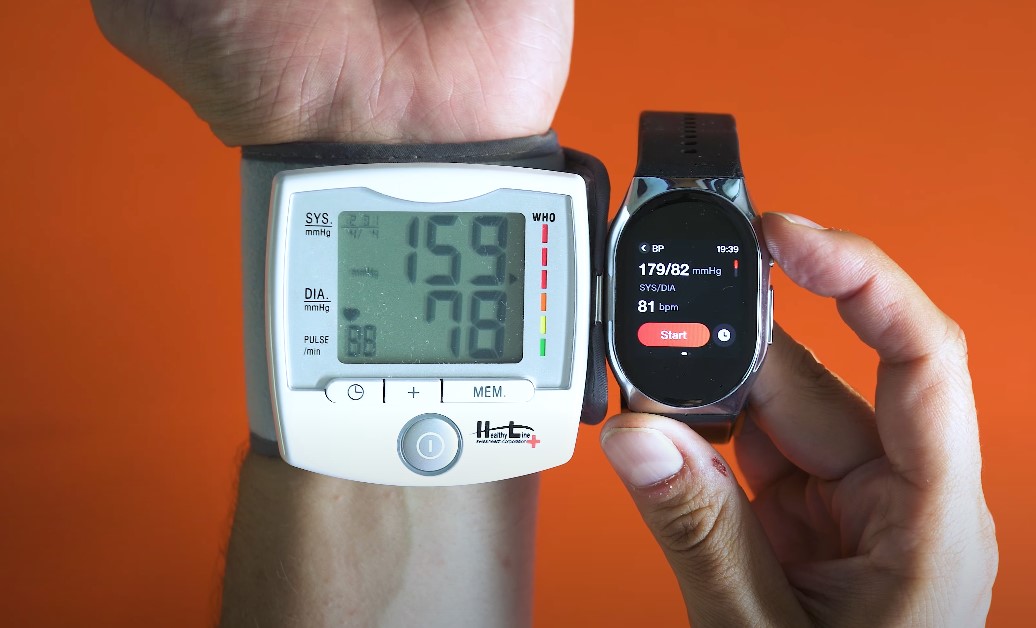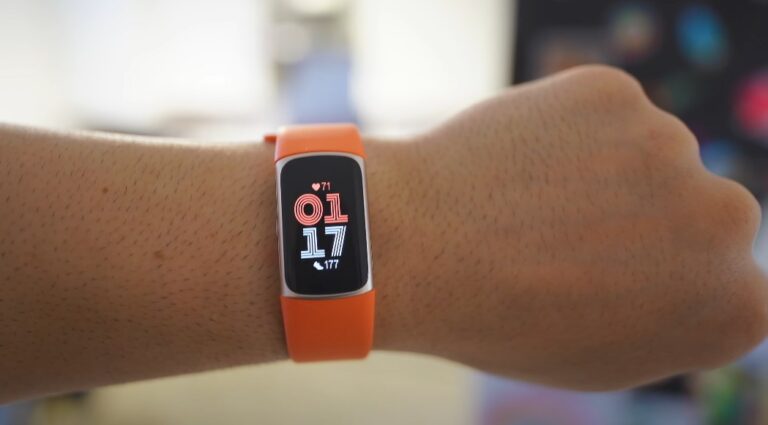People who track their fitness stats often wonder if a Fitbit can help keep tabs on blood pressure. It’s an understandable question, considering how many people rely on wearables for heart rate, sleep, and activity data.
Blood pressure is a big part of cardiovascular wellness, so the appeal is huge. Fitbit is a major player in the market, so let’s explore how it factors into that conversation.
Key Highlights
- Fitbit devices don’t measure blood pressure automatically yet.
- Manual logging via the Fitbit app is currently the only option.
- Fitbit is developing sensor-based BP tracking, but no release date yet.
Current Capabilities of Fitbit Devices

According to many individuals from the Fitbit community, none of Fitbit’s current offerings, including Sense 2, Charge, and other popular lines, can measure blood pressure automatically.
No internal cuff mechanism exists in any model as of March 2025. That doesn’t mean there’s zero option.
It’s possible to log readings manually in the Fitbit app, which allows a user to keep track of those numbers alongside steps, heart rate, and other health details.
It’s obviously less convenient than a direct measurement on your wrist, yet it’s still practical for anyone who already has a home monitor.
According to Fitstraps UK, Fitbit is actively developing a system that uses sensors and Pulse Arrival Time (PAT) to track blood pressure, though no devices with this capability have been released yet.
Manual input might be old school, but it gives people a straightforward way to combine data in one place.
For someone who’s trying to watch how exercise and sleep patterns may influence blood pressure, linking an external cuff’s readings to Fitbit’s dashboard can paint a broad picture.
That synergy is helpful for those with a history of hypertension, or anyone who just wants a more comprehensive look at daily health.
Why So Many People Want Wrist-Based Blood Pressure Measurements

Blood pressure is a pillar of cardiovascular health. Doctors and nurses rely on it to spot hypertension, hypotension, and general trends that point toward overall heart health. Traditional measurements involve an inflatable cuff around the upper arm.
That approach is reliable and widely accepted, yet it’s not always handy for people who need to check levels several times a day. Wearable devices bring an enticing idea: constant or near-constant tracking with minimal fuss.
It’s no shock that countless people would like to see Fitbit add cuff-free blood pressure measurements. Imagine glancing at your watch and spotting not just steps or heart rate, but also systolic and diastolic stats.
That vision is appealing, especially for those who juggle busy schedules, or for seniors who find standard cuffs a bit cumbersome.
The question revolves around the science needed to make that possible. It’s not easy to capture accurate blood pressure data at the wrist without a traditional cuff.
Glimpse at Fitbit’s Research and Development
Several patents suggest Fitbit is keen to break into the blood pressure arena. According to The Verge, one patent involves a force-sensitive screen paired with a photoplethysmography (PPG) sensor to estimate blood pressure.
Another well-known study from 2021 explored the idea of tracking something called pulse arrival time (PAT). PAT measures how long it takes for a pulse wave to travel from the heart to the wrist.
Researchers have been investigating how closely that timing aligns with actual blood pressure levels. There’s no official device on the market yet, though. Nothing launched so far includes a direct reading of systolic and diastolic pressure.
That said, many observers suspect it’s not a matter of “if” but “when.” Still, nobody can guarantee a release date.
How Blood Pressure Is Traditionally Measured
View this post on Instagram
Most folks have experienced the classic upper-arm cuff at a doctor’s office or pharmacy. A simple inflatable cuff cuts off blood flow briefly, then slowly lets it resume while sensors or a stethoscope pick up the returning flow.
That classic approach helps measure systolic (the higher value) and diastolic (the lower value) pressure in millimeters of mercury (mmHg). It’s considered the gold standard.
Home monitors follow a similar principle, though they’re automated. Some are worn on the upper arm, while others fasten on the wrist. The latter can be convenient, but many health professionals insist that upper-arm models are more reliable. Still, that doesn’t mean you shouldn’t use smart watches or certain health apps.
Wrist-based devices can introduce extra variation, partly because the arteries at the wrist are narrower and closer to the skin. Movement or improper positioning can skew results.
That’s why using a smartwatch for blood pressure is even trickier. No inflatable cuff means the readings rely on indirect signals that might fluctuate with body movements, skin perfusion, and other variables.
Challenges for Wearable Blood Pressure Tech

1. Calibration Requirements
Some methods, like those used by Samsung or other brands, still need calibration with a traditional cuff. You measure blood pressure in the old-fashioned way, then sync those numbers to your watch, helping the smartwatch’s sensor algorithms learn how to interpret signals.
After a few weeks, it’s often necessary to recalibrate. That routine can feel cumbersome, but it’s the tradeoff for having a watch-based reading at all.
2. Movement Sensitivity
Anybody who’s tried a wearable understands how easily readings can fluctuate. A quick run, a sudden arm movement, or even a slight shift in position could alter sensor readings.
Blood pressure data needs stability to avoid major inaccuracies, and that’s a key sticking point for engineers.
3. Regulatory Approval
Any device claiming to measure blood pressure automatically faces scrutiny from health authorities.
Companies must prove that their method is safe and accurate enough for general use, which can be a complex, time-consuming process.
Nobody wants a half-baked feature that misleads users about a critical health number like blood pressure.
Fitbit’s Manual Entry
Until a Fitbit watch comes along with built-in blood pressure sensing, manual logging stands as the main workaround. Plenty of Fitbit users do this regularly:
- Use an at-home cuff (preferably a validated arm version)
- Measure systolic and diastolic values carefully
- Enter those numbers in the Fitbit app, where a custom field allows personal tracking
- Observe patterns over days, weeks, or months
That approach might not feel glamorous, but it’s trustworthy if the cuff itself is accurate. Merging those readings with step data, heart rate, and even sleep duration offers a broader window into daily wellness.
Other Brands Pushing the Envelope
Wearable blood pressure tracking already exists in some form. Samsung’s Galaxy Watch line, for instance, has a blood pressure feature that demands frequent calibrations with a standard cuff.
Omron’s HeartGuide is a dedicated wrist-worn blood pressure monitor. That watch is FDA-cleared in the United States, but it’s not intended as a full-service fitness tracker.
It’s more of a specialized device. Fitbit, on the other hand, is known for a broad ecosystem covering everything from female health tracking to mindfulness sessions, so the brand will likely aim for a holistic solution that merges multiple health pillars in one package.
Wrapping Up
In short, current Fitbit models don’t automatically measure blood pressure. A built-in feature might arrive down the line, thanks to ongoing research and patents, but nothing has hit store shelves as of March 2025.
Manual logging is the main workaround for now, and it’s surprisingly useful if you combine a dependable cuff with Fitbit’s robust app.
The dream of a watch that accurately gathers blood pressure data without any calibration remains unfulfilled—but there’s real hope on the horizon.
References
- community.fitbit.com – Do Fitbit’s monitor blood pressure?
- fitstraps.co.uk – Does Fitbit Monitor Blood Pressure?
- theverge.com – Fitbit might be working on blood pressure tech, but its future is murky
- pmc.ncbi.nlm.nih.gov – Pulse Arrival Time, a Novel Sleep Cardiovascular Marker

